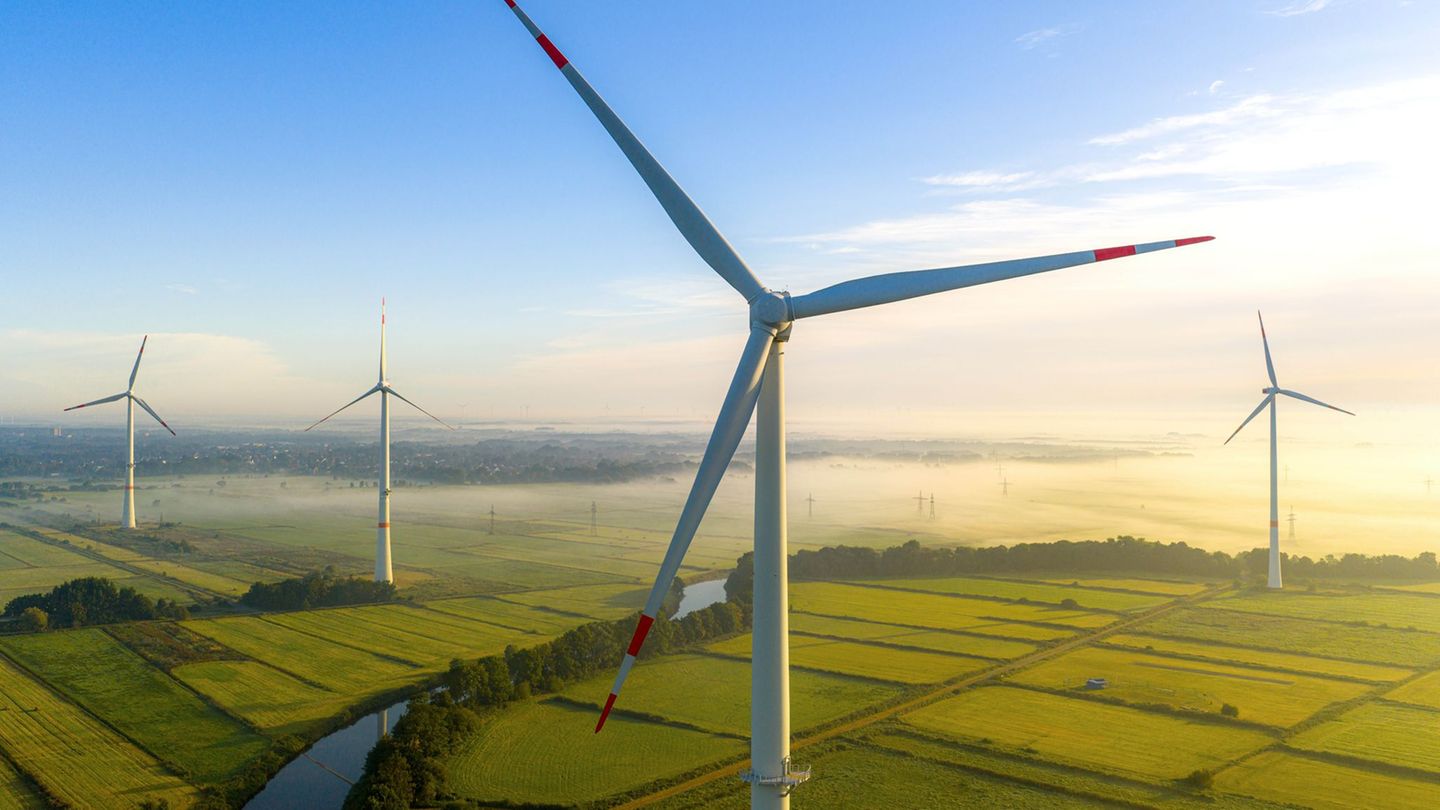Renewable energy
Explanation of wind turbines in Europe behind expectations
Copy the current link
Add to the memorial list
In order to achieve the goal of more than 40 percent renewable energy by 2030, there must also be significantly more wind turbines in the EU. According to the wind industry association, the expansion is clearly too slow.
According to associations, as many new wind turbines have been built in Germany in the first six months of the year as nowhere else in Europe. Overall, the new installations on the continent remained behind the expectations in the first half of the year, as the Winde Europe Association announced.
With newly built wind turbines in the first half of the year and at sea with a total output of around 2.2 gigawatts (GW), the Federal Republic is at the top in the country comparison, followed by Spain (889 megawatt) and the United Kingdom (760 megawatt), as can be seen from data from the industrial association. According to the industrial association, wind power performance of 6.8 GW was rebuilt across Europe, including 5.3 gigawatt within the 27 EU countries.
While the association of new wind turbines in Europe ended with an output of 22.5 GW in 2025, he now lowers its forecast to 19 GW. Problems are, for example, a low speed in electrification, bottlenecks in the power grid and continuing approval problems. Restrictions on network and port capacity and the availability of ships hindered the expansion of offshore wind energy.
Can goals be achieved?
Wind Europe now expects the EU to have an installed wind power capacity of 344 GW by 2030. By 2030, renewable energies are expected to identify 42.5 percent of total energy consumption in the EU. In order to achieve this goal, wind power must be significantly expanded – according to wind power, the wind power must offer 425 GW capacity.
In general, the project pipeline is well filled, “and we assume that the strong expansion will continue beyond 2030,” said the association. However, governments must grant priority to the electrification of industry, the expansion and modernization of the electricity grids, into the port infrastructure and the complete implementation of the new EU approval regulations.
dpa
Source: Stern




